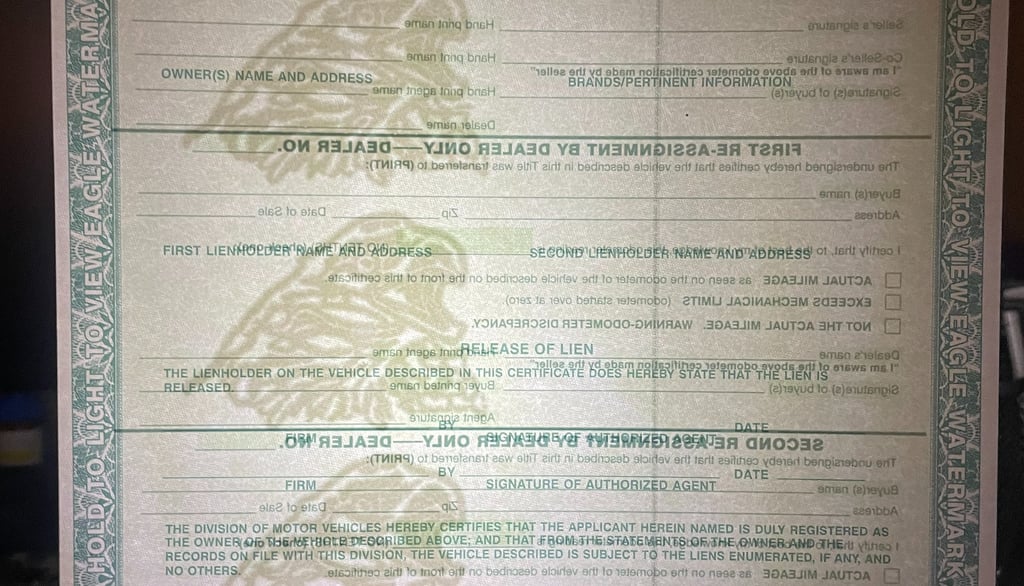20% off blackfriday sale - limited to first 25 orders - ends 12/01/2025 use code blackfriday20
Understanding Vehicle Title Papers: What They Are and Why They Matter
When you buy or sell a vehicle, there’s one piece of paper that’s more important than the keys themselves — the vehicle title. Whether you’re purchasing your first car, transferring ownership, or registering a new vehicle, understanding what a title paper is and how it works can save you time, stress, and even money. What Is a Vehicle Title? A vehicle title (sometimes called a pink slip) is an official document issued by your state’s Department of Motor Vehicles (DMV) or equivalent agency. It legally proves who owns the vehicle. Think of it as your car’s birth certificate — it contains essential information that links the vehicle to its rightful owner. A typical title paper includes: Owner’s name and address Vehicle Identification Number (VIN) Make, model, and year of the vehicle Odometer reading (at the time of sale) Lienholder information (if the car is financed) Title number and issue date Why the Title Is Important The title serves as proof of ownership. Without it, you can’t legally sell, register, or sometimes even insure the vehicle. It also protects both the buyer and seller in a transaction by documenting the vehicle’s history and legal status. For example: If there’s a lien listed, it means the lender still has a financial claim on the car. A salvage title indicates that the vehicle has been significantly damaged and repaired. A clean title means it hasn’t been declared a total loss and is free of major legal issues. Understanding the status of the title helps you make informed decisions before buying or selling a vehicle. Transferring a Vehicle Title When you buy or sell a car, the title needs to be transferred to the new owner. This process varies by state but generally involves: Seller signs the title and fills out required information like mileage and sale date. Buyer signs and provides their information. Both parties submit the signed title (and sometimes a bill of sale) to the DMV. The DMV issues a new title in the buyer’s name. If there’s a loan on the vehicle, the title might be held by the lender until the balance is paid off. Once paid, the lienholder releases the title to you. What to Do If You Lose Your Title Losing your title isn’t the end of the world — but you’ll need to request a duplicate title from your state DMV. Usually, this can be done online or by mail for a small fee. You’ll need to provide identification and the vehicle’s VIN. Electronic Vehicle Titles Many states are moving toward electronic titles (e-titles). These digital records are stored securely by the DMV and can be transferred electronically, reducing paperwork and fraud risks. However, printed copies may still be required for certain transactions or out-of-state sales. Key Takeaways The vehicle title is the official proof of ownership. Always check the title status before buying a used vehicle. Complete the title transfer immediately after a sale. Keep your title in a safe place, not in the glove compartment. Contact your local DMV if you need a duplicate or replacement title. Final Thoughts The vehicle title might look like just another piece of paper, but it’s one of the most critical documents you’ll ever handle as a car owner. Whether you’re buying, selling, or simply keeping your records up to date, understanding your title ensures you’re always in the driver’s seat — legally and financially.
VEHICLE TITLES
11/8/20251 min read


My post content
